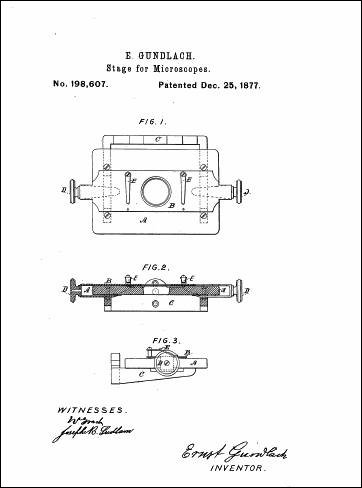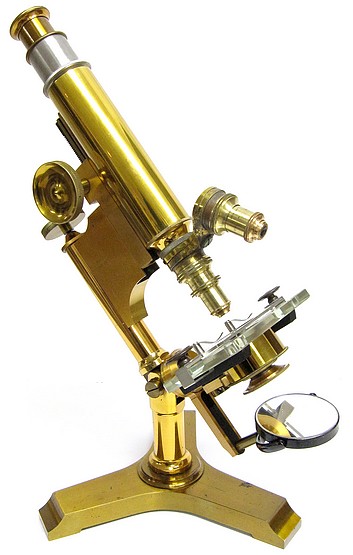
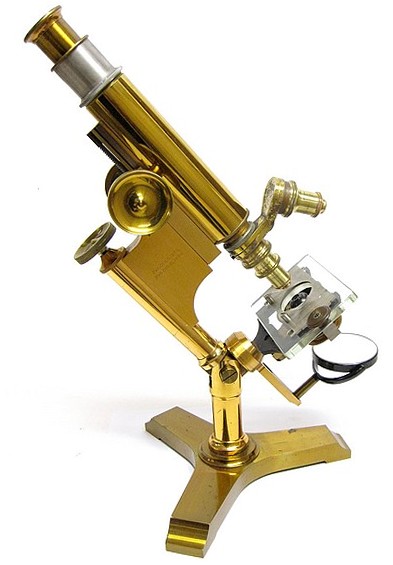
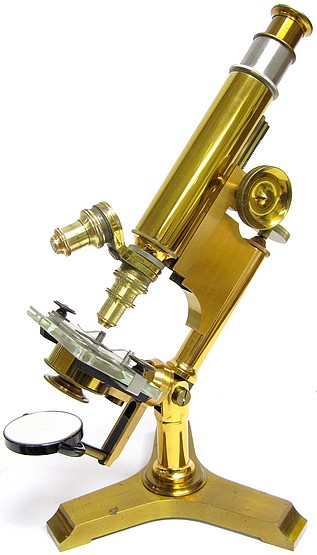

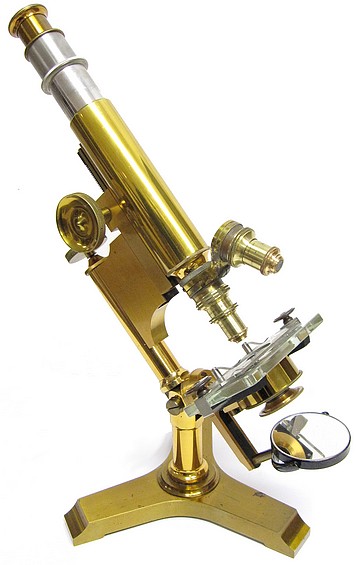
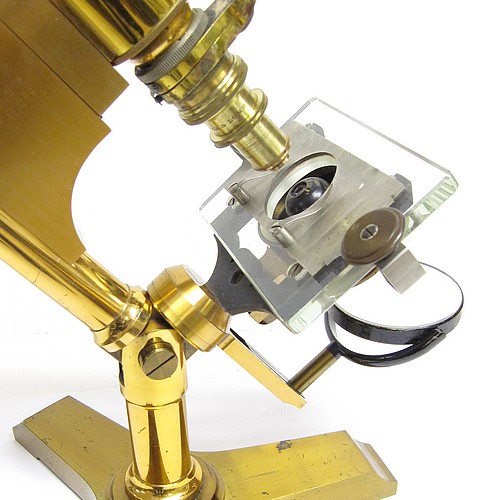
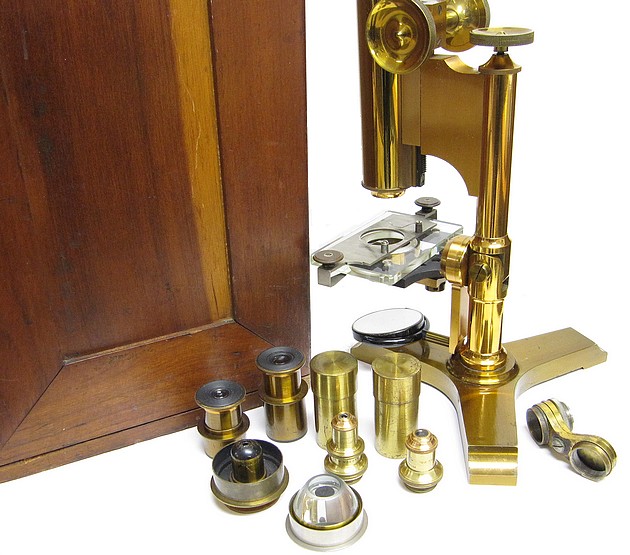
The microscope is furnished with two B&L objectives marked 2/3 and 1/5 each with canister, two eyepieces, the nickel plated slide carrier (patented in 1877), a sub-stage Wale type iris diaphragm, a parabolic dark field condenser, and a double objective changer. The serial number, 7516, is stamped into the inside bottom of the storage case.
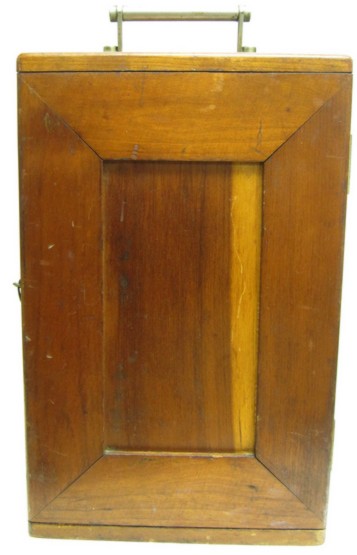
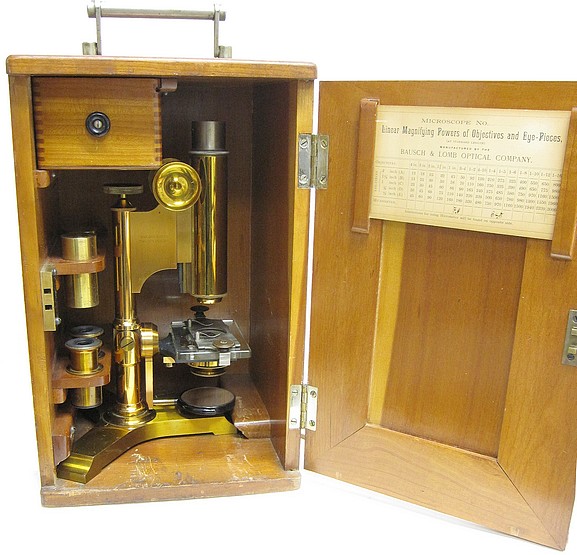
The following was extracted form The Journal of the Royal Microscopical Society, 1886
Bausch and Lomb Optical Co.'s Physician's Microscope - The special features of this instrument (fig. 114) are the fine adjustment (described in Vol. II., 1882, p. 683), the cradle-joint for inclining, and the glass stage. The latter rests on a forked support and could be made to give in a different form one advantage of Mr. Nelson's divided stage, as with glass the position of the illuminating apparatus would be readily seen. The slide-carrier would, however, require to be altered, so as not to impede the view beneath the stage. There is a removable substage and diaphragm. The pillar and arm, in the original form, were marked so as to indicate the correct inclination of the body in the use of the camera lucida. The mirror is attached to a swinging tail-piece.
The microscope shown on this page is an example of a later version Physician's model. It differs from the one described in the Journal in having a brass tripod base as opposed to the more typical cast iron claw base and in having the upper section of the draw-tube nickel plated. It is otherwise very similar to the illustrated microscope. This instrument represents a final version of this model. By the end of the century, the microscopes produced by the firm were largely in the "continental" style. Two earlier versions of the Physician's model from 1879 and 1883 are also represented in this collection.
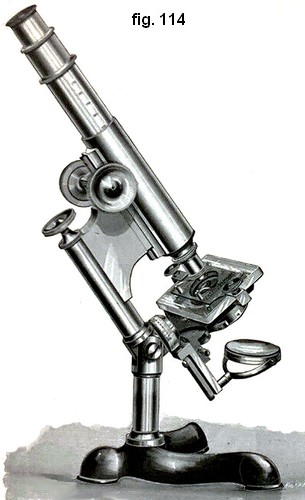
This model was also described in the Sharp & Smith Catalog of Surgical Instruments, 1889 as follows:
Fig. 5456—No. 530.—PHYSICIANS’ MICROSCOPE
This instrument has enjoyed a popularity since its first introduction. It has from time to time been improved, and within a year has been entirely remodeled, although its original features are all retained. Under all these improvements it has remained at the same price, and even now, although considerably more valuable than formerly, we have decided to make no change. We believe that we are therefore in a position to claim that no instrument of equal efficiency is offered for the price. It is firm, compact, and will give the various adjustments, and will permit the use of such accessories as modern examinations require.
The base is japanned and of neat design. Pillar and arm of bronze, connected by a well fitting joint, for inclination of the body to any angle. Coarse adjustment is by rack and pinion, giving a long range; fine adjustment by micrometer screw acting on our patent movement; main tube has drawn tube provided with society screw.
The stage consists of our square glass stage and slide carrier attached to a firm projecting fork, to which is also attached the sub-stage. The latter may be centered or entirely removed, and receives the revolving diaphragm and accessories. The plane and concave mirrors are adjustable on the mirror bar, and this swings to any obliquity below the stage and above it for the illumination of opaque objects, on a center in the plane of the slide carrier.
We furnish with this instrument, at the choice of the purchaser, either the base described above or the brass base of the Harvard microscope; unless especially mentioned however, we always send the japanned base.

